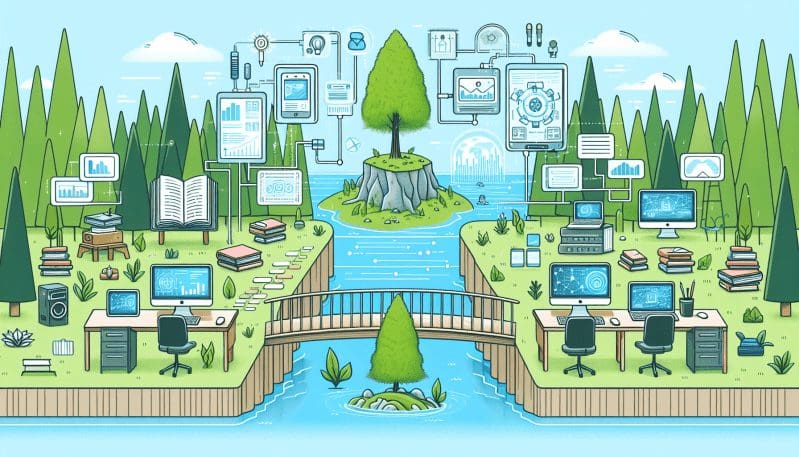Bridging the Digital Divide: Lifelong Learning as a Pillar for an Inclusive Future Workforce
- Home
- Bridging the Digital Divide: Lifelong Learning as a Pillar for an Inclusive Future Workforce
- Vishal Kumar
- March 21, 2024
- 0 Comments
As we voyage deeper into the 21st century, the fabric of our workforce grows increasingly threaded with digital tools and technologies. Like the spinning of a grand tapestry, the process is intricate and beautiful, yet complex and excluding for those not equipped with the requisite skills. As a Technology Futurist, I see a landscape brimming with potential yet marred by a stark digital divide. This chasm separates those who have access to digital tools and skills from those who do not, threatening to leave a significant fragment of society in the shadows of obsolescence.
In addressing this digital divide, one solution glimmers with promise: lifelong learning. The imperative for continuous education, particularly in fostering digital literacy and upskilling, cannot be overstated. Lifelong learning is more than a career enhancer; it is a social equalizer and a beacon of hope for an inclusive future workforce. By embracing continuous education, vulnerable demographics gain the compass to navigate the ever-evolving technological landscape.
But how do we stitch lifelong learning into the very fabric of our daily lives? The approach must be multi-threaded—entwining the efforts of policy makers, educators, employers, and even the workers themselves. For policy makers, crafting legislation that incentivizes businesses to invest in employee education is crucial. Educators must weave innovative curriculum that is accessible and relevant, while employers should foster a culture that champions skill development as a part of career progression.
Yet, not all communities face this digital divide with equal footing. Some grapple with inadequate access to technology or the internet, while others lack the foundational education needed to begin their digital literacy journey. Addressing these disparities requires targeted efforts, including the implementation of community technology hubs and ensuring affordable internet access for all.
Beyond the barriers faced today, we must also cast our gaze to the horizon where emerging technologies such as AI, VR, and blockchain stand to redefine the learning paradigm itself. These technologies promise to deliver more personalized, immersive, and efficient educational experiences, accelerating the journey from learning to application.
This is where initiatives like ‘No Worker Left Behind’ emerge as vital architects of change. By championing the democratization of education, we not only prepare workers for the jobs of tomorrow but also ensure that these opportunities are equitably distributed. It is a clarion call to action for all stakeholders to unite and weave a future where every worker is endowed with the threads of knowledge and skill required to thrive in the digital age.
In conclusion, the march of technology will not slow, nor should it. Instead, let us quicken our pace to match its rhythm by investing in lifelong learning as a cornerstone of an inclusive workforce. Let every stride we take close the gap of the digital divide, ensuring that in the future world of work, there is, indeed, no worker left behind.

